23 Nov 2024
During the weaning process of piglets, stress factors such as separation from the mother, dietary changes, and environmental shifts lead to a reduction in feed intake and weight gain.
Changes in the physical form and chemical composition of the diet alter the villus architecture, potentially reducing the digestion and absorption of nutrients (Wang et al., 2021).
 Antibiotics are used to minimize these negative effects, administered preventively through the diet. However, due to the threat to human health posed by antibiotic resistance, many countries have implemented restrictions on their use as growth promoters in animal production (Rahman et al., 2022).
Antibiotics are used to minimize these negative effects, administered preventively through the diet. However, due to the threat to human health posed by antibiotic resistance, many countries have implemented restrictions on their use as growth promoters in animal production (Rahman et al., 2022).
Phytogenic additives are promising alternatives to antibiotic growth promoters because:



The diversity of results observed in scientific articles on this topic motivated the use of systematization and meta-analysis to compile information on the use of phytogenic additives in nursery piglet diets.
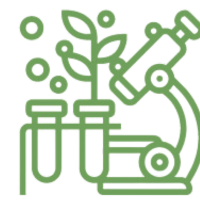
The database included: 41 studies published between 2004 and 2017, totaling 5,197 non-challenged nursery piglets, with body weights ranging from 7.7 to 13.8 kg and ages between 27.3 and 47.8 days, distributed across 156 experimental groups.
 The most common phytogenic additives included were oregano, thyme, pepper, and cinnamon. Additionally, 54% of the studies used antibiotics, with 40% of these studies employing colistin.
The most common phytogenic additives included were oregano, thyme, pepper, and cinnamon. Additionally, 54% of the studies used antibiotics, with 40% of these studies employing colistin.
The analysis of variance was conducted using a generalized linear model with covariate adjustment (LS means). This analytical model included the effects of phytogenics and antibiotics (additives), studies (random effects), and random errors. The statistical analyses were performed using Minitab 19 software.
The intra-study results (∆) indicate that non-challenged piglets receiving antibiotics (ATB) show a 12.2% higher weight gain (P=0.04) compared to the control group (Table 1). On the other hand, piglets receiving phytogenics show responses similar to the control group.
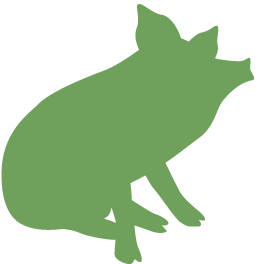
Table 1. Performance of nursery piglets fed diets containing phytogenic additives or antibiotics
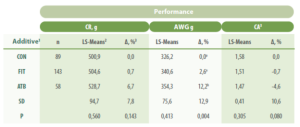
SD, residual standard deviation. n, number of treatments. Probability at 5%; 1CON, negative control (no additives); FIT, phytogenic additive; ATB, antibiotics; 2LS-Means (adjusted means) for intra-study analysis. 3Δ, obtained by the difference between treatments (intra-study) with phytogenic additives or antibiotics compared to the respective control treatment, values followed by different letters are significantly different according to Fisher’s test (P < 0.05).
Antibiotics improve piglet performance, possibly due to the control of pathogenic bacteria and the promotion of beneficial bacteria in the gut.

Table 2. Morphometry of Small Intestinal Fractions in Non-Challenged Nursery Piglets Fed Diets Containing Phytogenic Additives or Antibiotics
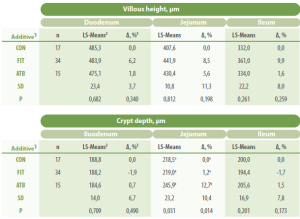
1CON, negative control (no additives); FIT, phytogenic additive; ATB, antibiotics; SD, residual standard deviation. n, number of treatments. 2LS-Means (adjusted means) for intra-study analysis. Probability at 5%. 3Δ, obtained by the difference between treatments (intra-study) with phytogenic additives or antibiotics compared to the respective control treatment; values followed by different letters are significantly different according to Fisher’s test (P < 0.05).
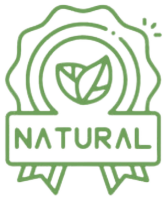
The use of combined phytogenic additives (blends) in piglet diets shows better results in weight gain compared to the use of a single phytogenic additive. This suggests that combining phytogenic additives may be more effective than specific antibiotics in nursery piglets (Lallès and Montoya, 2021).
Although antibiotics showed better performance responses, it is essential to consider the positive outcomes of phytogenic additives on intestinal morphometry, which are associated with:
- An increase in microbial diversity, which may prevent inflammatory responses triggered by pathogenic bacteria (Xu et al., 2018);
- A reduced inflammatory response and lower cellular turnover, favoring villus growth (Wei et al., 2020); and
- Consequently, improved nutrient utilization from the diet due to a lower maintenance requirement (Wang et al., 2020).
In conclusion, antibiotics are effective in improving the performance of nursery piglets but may compromise intestinal integrity. The combined use of phytogenic additives may provide better performance results than the use of individual plant extracts.
References available upon request
